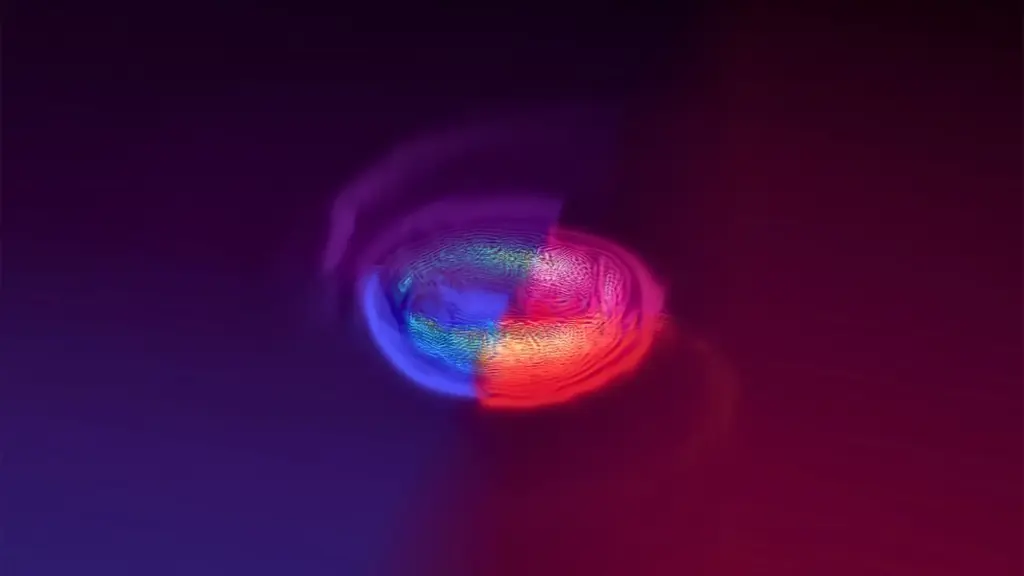
The groundbreaking research published in the journal Physical Review Letters suggests that neutrinos, elusive fundamental particles, may play a crucial role in the creation of heavy elements such as gold and platinum during neutron star mergers. This study is the first to simulate the transformation of neutrino “flavors” in these cosmic collisions, offering new insights into the processes that lead to the formation of these precious metals.
Neutrinos are known for their weak interactions with other matter and exist in three flavors: electron, muon, and tau. Under specific conditions, such as those found inside a neutron star, these particles can change flavors, altering the types of particles they interact with. This transformation, previously unaccounted for in simulations, could significantly impact the matter ejected from neutron star mergers and the structure of the remnants.
Unraveling Neutrino Flavors in Cosmic Collisions
The research team, led by Yi Qiu, a graduate student in physics at Penn State, constructed a comprehensive computer simulation of a neutron star merger. This simulation incorporated various physical processes, including gravity, general relativity, hydrodynamics, and neutrino mixing. The study focused on the transformation of electron flavor neutrinos to muon flavor, deemed most relevant in this environment.
“Previous simulations of binary neutron star mergers have not included the transformation of neutrino flavor,” Qiu explained. “This is partly due to the rapid timescale of the process and the lack of understanding of the theoretical physics involved, which extends beyond the standard model of physics.”
“The extent and location of neutrinos mixing and transforming impacts the matter that is ejected from the merger, the structure and composition of what remains after the merger — the remnant — as well as the material around it.” – Yi Qiu
The Impact on Element Formation
The researchers discovered that the timing, location, and density of the surrounding material during neutrino mixing significantly influenced the composition and structure of the merger remnant. During these collisions, neutrons from the neutron star can be captured by other atoms in the debris, eventually decaying into heavier elements. This process could lead to the formation of heavy metals like gold and platinum, as well as rare earth elements crucial for modern technology.
David Radice, Knerr Early Career Professor of Physics at Penn State, highlighted the importance of neutrino flavor changes. “A neutrino’s flavor changes how it interacts with other matter,” he said. “Electron type neutrinos can convert a neutron into a proton and electron, but muon type neutrinos cannot. This conversion can alter the number of neutrons available, directly impacting the creation of heavy metals and rare earth elements.”
“Accounting for neutrino mixing could increase element production by as much as a factor of 10.” – David Radice
Implications for Future Observations
The study also suggests that neutrino mixing during mergers could influence detectable emissions from Earth, including gravitational waves and electromagnetic radiation like X-rays or gamma rays. Radice noted that with advanced detectors such as LIGO, Virgo, and KAGRA, astronomers are better equipped to detect gravitational waves more frequently, enhancing our understanding of these cosmic events.
“In our simulations, neutrino mixing impacted the electromagnetic emissions from neutron star mergers and possibly the gravitational waves as well,” Radice added. “Understanding these emissions will help us interpret future observations.”
Future Directions and Theoretical Challenges
Despite the progress, many questions remain about the theoretical physics of neutrino transformations. Qiu acknowledged the uncertainties, stating, “There’s still a lot we don’t know about the theoretical physics of these neutrino transformations. As theoretical particle physics advances, we can greatly improve our simulations.”
The researchers likened modeling the mixing processes to a pendulum being turned upside down, initially experiencing rapid changes before stabilizing. This analogy underscores the complexity and potential of these simulations to enhance our understanding of cosmic phenomena.
With the infrastructure for these complex simulations now established, the team anticipates that other research groups will utilize this technology to further explore the impacts of neutrino mixing. Radice emphasized the significance of neutron star mergers as “cosmic laboratories,” providing insights into extreme physics that cannot be replicated on Earth.
The research, supported by the U.S. Department of Energy, the Sloan Foundation, and the U.S. National Science Foundation, included contributions from Maitraya Bhattacharyya and Sherwood Richers, highlighting the collaborative nature of this scientific endeavor.






